Millions for the Mega Cuboid
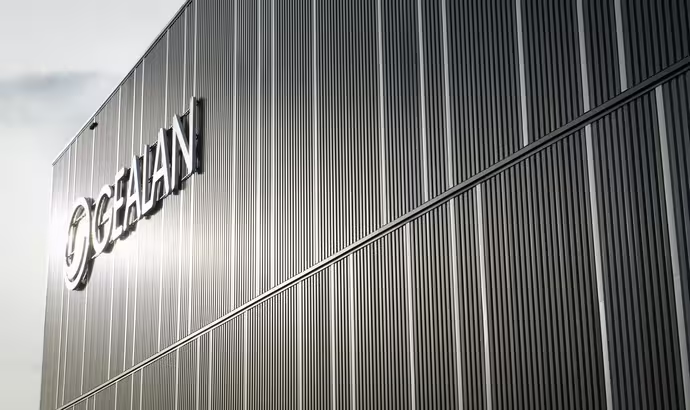
In Tanna, Thuringia, GEALAN produces PVC profiles for windows and doors. At first glance, the actual production process, extrusion, seems to have nothing to do with logistics. But the logistics department acts as a control centre that merges many processes. If something goes wrong in logistics, nothing works in production or with customers.
The logistics tasks are diverse and highly sensitive, and logistics faces many big challenges: lack of personnel, shortage of raw materials, supply bottlenecks, time and cost pressure, disposal, digitalisation. In 2024, GEALAN will put an impressive high-bay warehouse with an adjoining order-picking hall into operation in Tanna and invest around 15 million euros in it. The complex will offer a lot of space, but it will also make logistics work easier and faster and conserve resources.
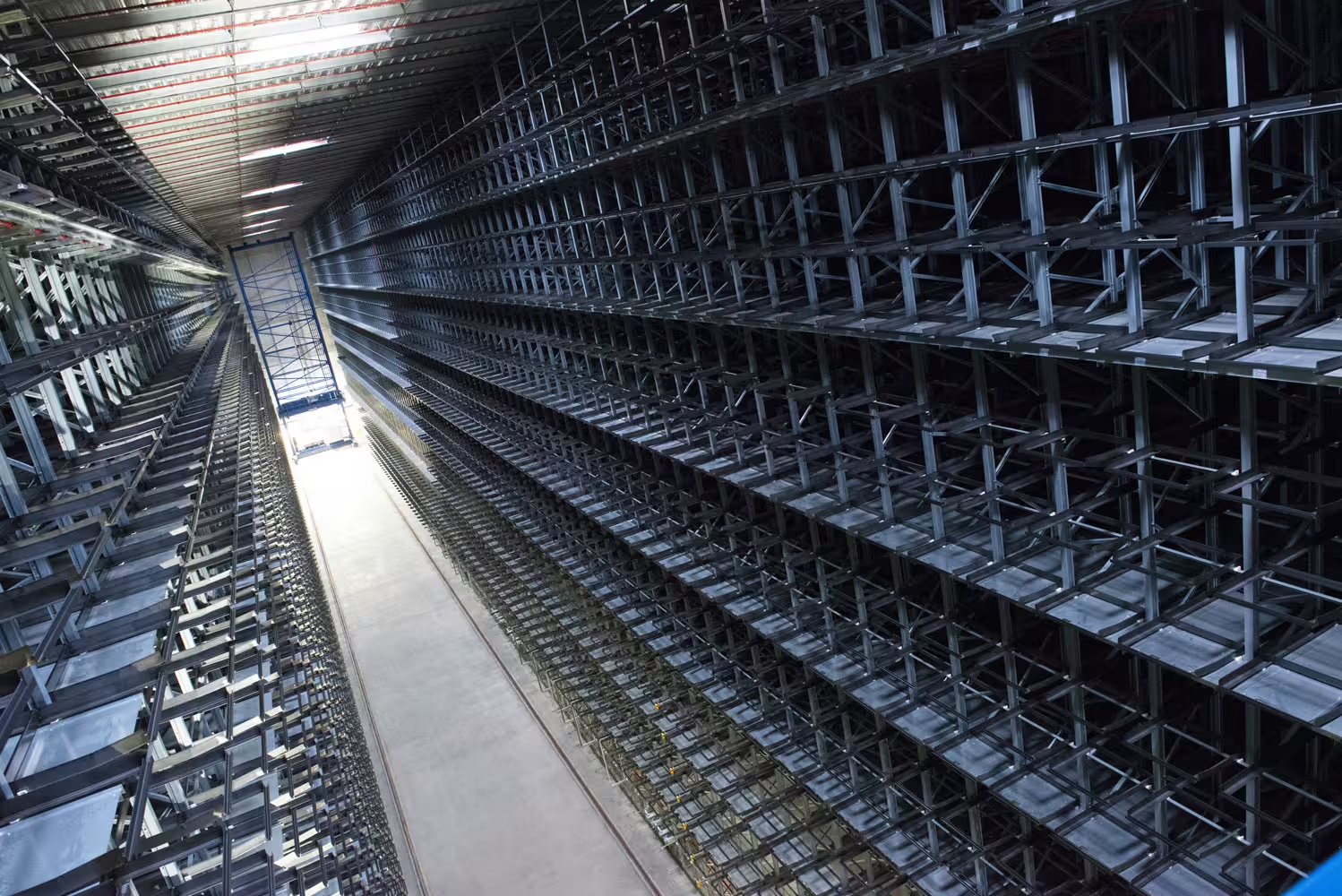
If sepia-brown window profiles are pushed out of an extrusion line, it was initiated by the logistics department. If a road train delivers 20 tonnes of steel rods for window bracing, logistics registers the process. From the receipt of raw materials and supplies to the dispatch of goods, Logistics is involved in every step of the process. ‘Without logistics, production would run, but it would run disorderly’, explains GEALAN Logistics specialist Michael Steiniger. ‘We write machine orders and distribute them to 40 extrusion lines and 11 laminating systems. We plan production quantities, bundle and track orders, and monitor production status. We deliver profile bars to the laminating department, where our colleagues finish them with decorative foils. Then we take them back.’ In addition to work preparation, production planning and production control, traditional warehouse logistics complete the field of competence with transfer of customer orders to the warehouse, order picking, packaging, loading and shipping. ‘We plan so that we can deliver on time. Sometimes we ship goods in the morning that were produced at night. The right quantity in perfect quality at the right time – that’s how we handle logistics.’
150 women and men work in logistics in Tanna. 85 per cent of them pick or transport goods. 15 per cent have commercial jobs. The Strategic Logistics division determines when how much of what is produced and stored. About one third of the 34,000 profile variants offered by GEALAN are available for immediate delivery. Two thirds are extruded to order and finished with foil if the customer wishes. In a nutshell: standard items are kept in stock, but special requests are made to order. From its central logistics location, GEALAN delivers to 40 countries, as far away as Japan, Paraguay and New Zealand. The route of the goods to the customer leads through a logistical bottleneck: loading space is in demand, drivers are scarce, the roads are full and every kilometre costs more and more money. According to Steiniger, the transport market has gone crazy, and the situation is getting worse. GEALAN and more than 50 freight forwarders have established a partnership network. They meet on equal footing and solve problems together. ‘Freight forwarders should enjoy working with GEALAN; we expect guaranteed transport capacities in return. It is clear to us that a lorry is only profitable when it is running. That’s why we keep downtimes short. A lorry should be loaded or unloaded on our premises in less than two hours and the drivers should feel comfortable with us.’ In dialogue with customers and the GEALAN sales department, GEALAN logistics examines and questions customary delivery routines – to reduce costs, but also to improve sustainability: Does the freight forwarder really have to drive to an address three times a week? Would regional warehouses make sense? Do deliveries have to reach the customer in 24 hours or are 48 hours enough? ‘With a little more delivery time, we can plan better, combine deliveries, make better use of loading spaces and avoid redundant trips.’
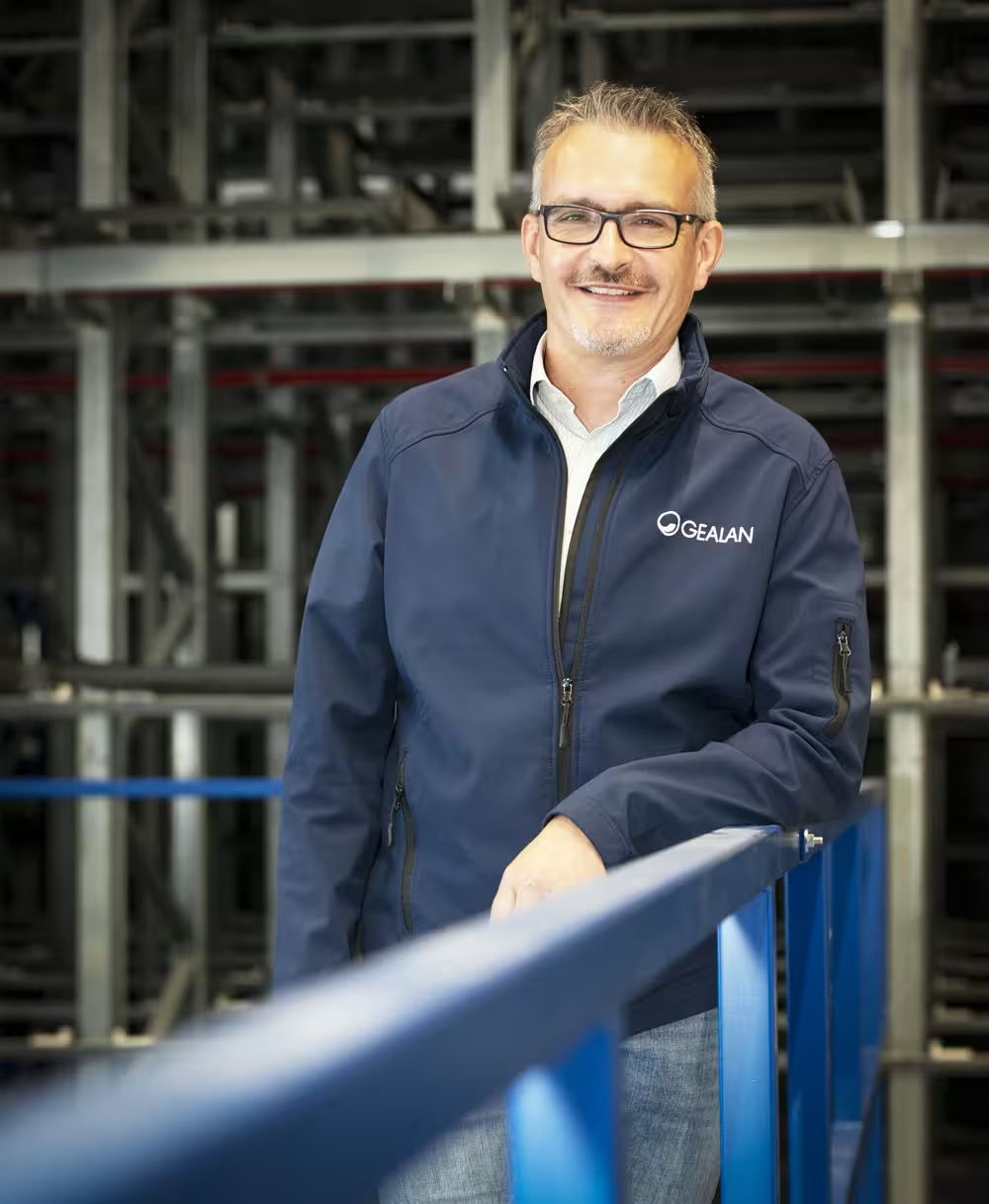
Flexibility is a must in logistics. Customers expect it. Customers love it. Michael Steiniger: ‘As long as there’s a lorry in our yard, we load profile containers – even at the last minute. That’s not as obvious as one would think.’ First bottles, then cheese, then fruit – GEALAN customers cannot have their deliveries packed quite as individually as when they’re shopping in the supermarket – at least not yet. However, ‘upon request, we place main profiles and accessory profiles separately or put together containers object by object. The requests are becoming more and more complex, and we will soon be able to fulfil even more. However, we also pay attention to optimal utilisation of containers and lorries.’ For window manufacturers, the priority is the production of windows, not logistics. But GEALAN is thinking about providing them with logistical advice as well – on site or from Tanna. Furthermore, customers will receive delivery status updates in the future, comparable to the tracking of parcel services. ‘If you know when your delivery will arrive, you don’t waste your time waiting.’
Time is a key factor in logistics. Stacking a particular container from the middle of a mixed block of containers takes time. Travelling from shelf to shelf during picking takes time. In GEALAN’s new high-bay warehouse, the technology accesses each individual container directly. And the containers go to the pickers, no longer the other way around. ‘We gain space and efficiency’, explains Stephan Siniawa from GEALAN’s Facility Management division. ‘Until now, we had to handle goods several times before they were sold. Now it has a fixed storage location and is only moved once – for shipping.’
In 2019, GEALAN conducted a feasibility study for a high-bay warehouse – with the goal of increasing storage capacity. In December 2021, the concept was ready, and construction began in spring 2022. The managing director and division manager entrusted the project to a four-person agile Scrum team with a clear distribution of roles. Michael Steiniger: ‘Our discussions were intense – within the team and with external partners. We did not stick rigidly to a predefined goal. Instead, we reacted repeatedly to new requirements and changing conditions, to price increases or delays, etc. Every once in a while things got a little heated, but we learned that agility strengthens our team and advances the project and the company in a really powerful way.’
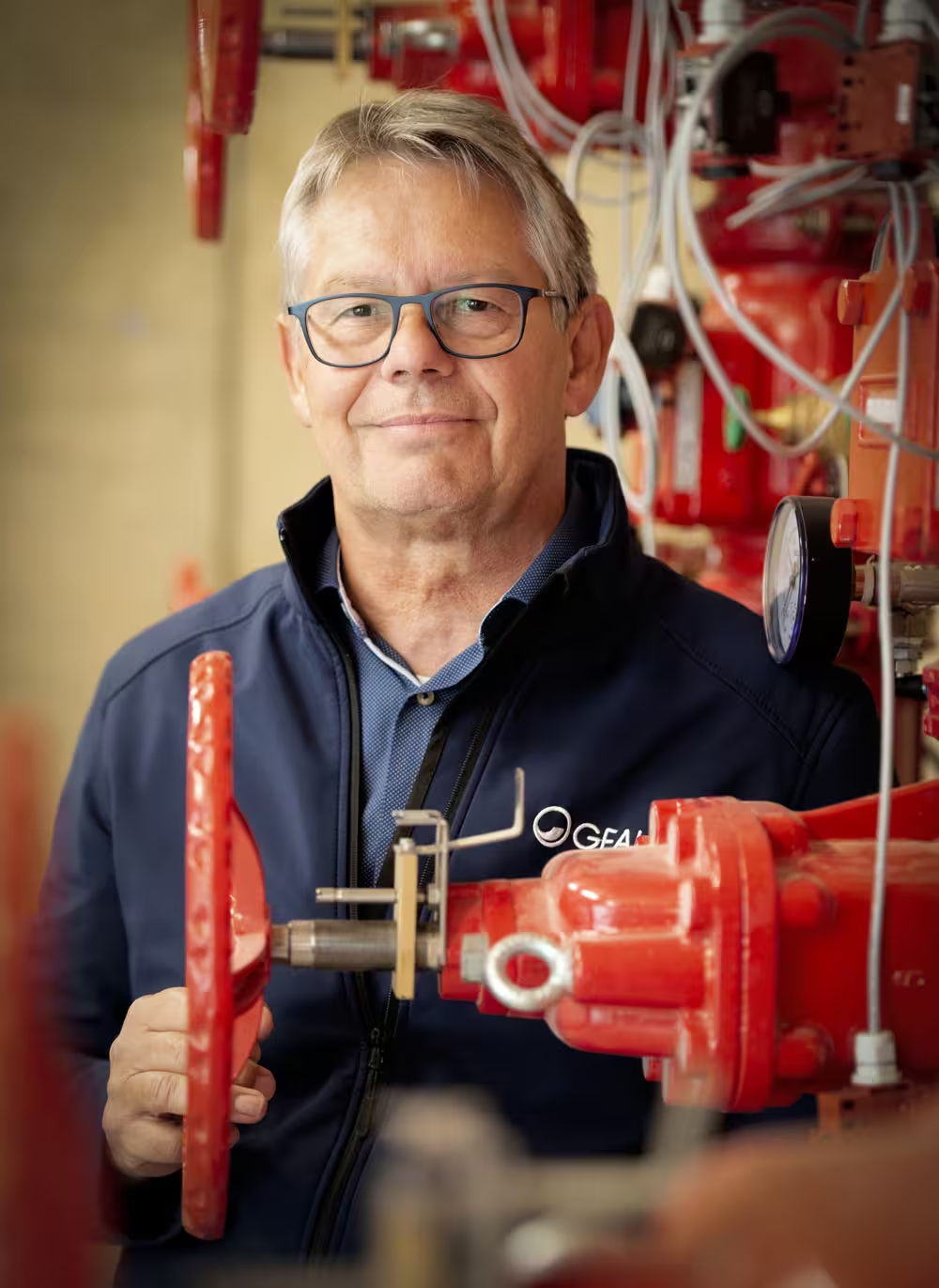
After eighteen months of construction, the high-bay warehouse was ready: a huge cube that towers over the other buildings in the Kapelle-Nord industrial park and can be seen from afar. The steel rack does not stand inside the building – it actually forms the supporting structure. The roof and walls are bolted directly to the racking structure. The advantage of this silo design is that GEALAN can use almost the entire net content of the building as storage space because no space is lost for concrete supports or roof trusses. No people work in the high-bay racking itself. Two imposing stacker cranes travel at high speed on rails through the racking aisle. They retrieve profile containers from the shelving compartments and transport them to four order-picking stations. Once the order picker has removed the profiles, the operating devices put the containers back into storage. Empty containers are removed from the high bay by a third, smaller storage and retrieval machine (RBG light). The prefabricated reinforced concrete skeleton of the order-picking hall spans over twenty metres – otherwise, the RBG light could not operate here.
The walls of both buildings are clad with sheet steel cartridges and heavily insulated. The roof has a vapour barrier. Thus, the new GEALAN building in Tanna meets the KfW 40 low-energy standard. A pellet heating system ensures a constant temperature in the high-bay warehouse. In the order-picking hall, underfloor heating creates a pleasant, draught-free indoor climate for the employees. Like all new GEALAN buildings, the building is prepared for the installation and operation of a photovoltaic system. Cleaning the areas for order picking will be done by a robot that empties itself after wiping.
According to Stephan Siniawa, the new high-bay warehouse and the new order picking area are also very important for the personnel development. He explains: ‘So far, order pickers had to climb onto the shelves to remove goods. They had to assume awkward postures and carry profile bars overhead. For the new picking stations, planners and warehouse staff determined the best working height and aligned the stations accordingly. The workstations with large window areas offer a lot of freedom of movement and are equipped with anti-fatigue mats that make standing on the industrial floor for longer periods easier.’ In the new complex, order pickers work stationary. They no longer drive order picking tractors that rumble awkwardly over floor joints. They no longer have to constantly climb up and down and are no longer exposed to draughts while driving. Without traffic, there are no traffic accidents. ‘Ergonomic, stationary workstations take the strain off order pickers. With increased automation, less and less needs to be done by hand and we can continue to grow with the staff we have available.’
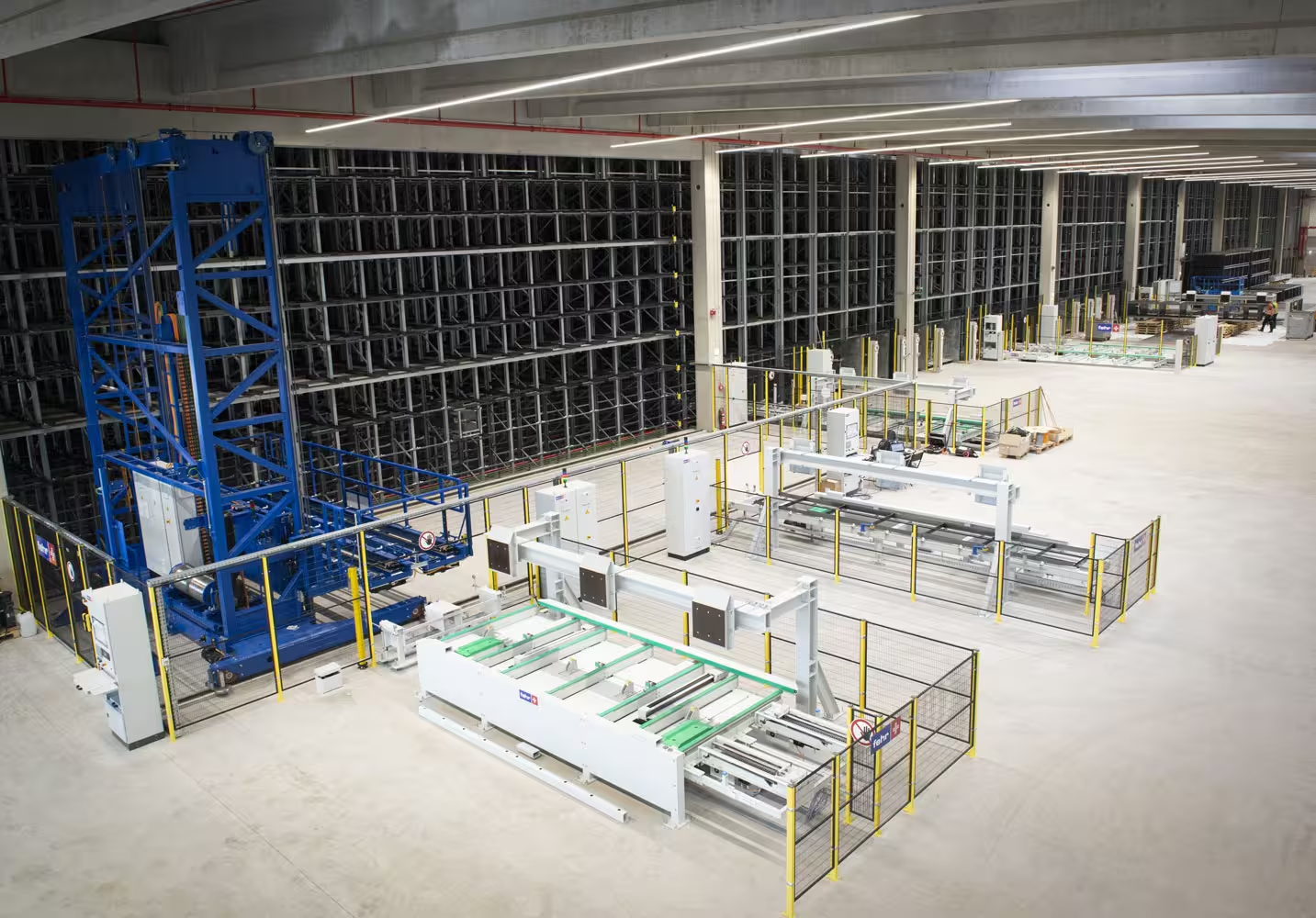
GEALAN now has much more storage volume in Tanna and can close an external warehouse and eliminate lorry shuttle trips. The number of forklift movements on the company premises is decreasing. GEALAN is currently checking whether forklifts with electric drives can take over container transport. To avoid foil waste, GEALAN is looking into container covers that can be used several times. As a member of EPPA (European PVC Window Profiles and related Building Products Association), GEALAN is participating in a returnable transport system that recycles profile containers – and already passed the audit for it. Michael Steiniger: ‘If metal containers come back to us quickly, we can avoid using wooden boxes. Wooden boxes are an expensive one-way means of transport, while containers last at least ten years.’ Container management should become more transparent and digital overall. GEALAN is currently developing a container app that customers can use to manage their inventory and register container returns easily with just a few clicks.
Unmanned forklifts will probably soon be rolling through the warehouse in Tanna, either automatically or controlled remotely by tele-operators. It is conceivable that the operator will log on to forklifts in Croatia, Lithuania, Poland or Romania in between. The roadscape will change: lorries will be on the road as electronically linked convoys with the help of platooning, driving will become autonomous, lorries will be powered by overhead wires – all this is already in the trial phase. And the traditional freight forwarder model is likely to be discontinued. Freight platforms will bundle data and flows of goods online more globally and avoid empty runs even more selectively. Logistics will remain an area of tension. In Tanna, logistics is very well positioned, and not only because of the successfully completed multi-million highbay warehouse project.

Marc Schenk
07/11/2023
Latest articles

GEALAN from the inside
GEALAN from the inside
A really good tool for internal communication: GEALAN inside is anything but a bulletin board; the digital platform is a prime example of how internal company information can be bundled and prepared in a user-friendly way. GEALAN inside is packed with interesting facts and yet clear, offers umpteen functions and is easy to use. All those who work at GEALAN have their virtual meeting place – and on top of that, GEALAN inside looks chic too.

"Customers who challenge us"
"Customers who challenge us"
GEALAN has 2022 its premium system GEALAN-KONTUR®. It combines design-oriented Design language with convincing Technical Characteristics. Its development was a joint project between the system provider and two window manufacturers: Felbermayer and PaX. Robert Tänzel (45), Sales Head of Division at GEALAN, has talked to us with the two project partners. He tells of a challenging all sides Cooperation. And of other challenges he has tackled – long before he has joined GEALAN.

Through the eyes of a physicist
Through the eyes of a physicist
Cameras on, high quality: The optical control systems, GEALAN on the extrusion lines in Tanna, are a direct investment in quality. You will work with Artificial Intelligence and recognize on the profile surfaces almost every Deviation from the optimum. A droplet of water on the profile? No problem. A visible scratch or tiny bubble? Immediately used as Error reported – and that in extrusion speed, such decisions for the human eye almost impossible. Dr.-Ing. Winfried Bernhard (55), Head of GEALAN Quality Management and the man who GEALAN's quality offensive, looks at the new hardware, and nods. Nor are they a test, but how good the systems work and how closely they look, already fascinates him.